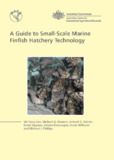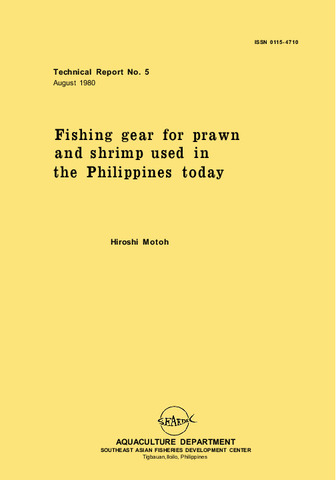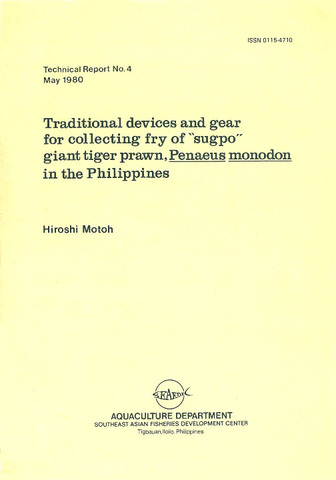An integrated semi-intensive shrimp and livestock system in the Philippines.
- Global styles
- MLA
- Vancouver
- Elsevier - Harvard
- APA
- Help
View/
Date
1986Page views
5,600ASFA keyword
AGROVOC keyword
Taxonomic term
Metadata
Show full item record
Share
Abstract
The development of shrimp (Penaeus monodon) production system integrated with livestock was undertaken at the Sycip Plantation Inc., Negros Orienta, Philippines, as a result of crop diversificstion efforts in the province. Heavy organic manuring of brackishwater shrimp ponds strongly simulated the production of lablab in the initial stages of pond preparation. Obsevations suggest that the problem of detriorating water quality in the last stage of culture due to prawn burrowing/feeding activities, was exacerbated by constant addition of anures. Plankton analysis of pond water indicated that this was a result of excessive nanno- and picoplankton blooms. A highly sinificant correlation (P < .001) between plankton (cell size < 5 microns) count and BOD was obtained. An alternative system using "kitchen ponds" stocked with artemia provided a suitable source of food for shrimp growth. Daily additionalof manure (100 kg dry weight/ha/day) produce an average 40 kg of ixed artemia and lablab protein each day during a three-month study period. Analysis of input:output ratios for the kitchen pond showed a net loss in organic matter and net gain in nitrogen yields during the conditioning period. Conditioned ponds had a net gain in both organic matter and nitrogen yields. An ares ratio of 1:5 for kitchen pond shrimp grow-out enable production at 700-1,000 kg/ha/crop at 30,000 pieces/ha stoking density, survival and grow-out period of 120 days. Significant reductions in feeding cost were obtained.
Type
Conference paperCollections
- Conference Proceedings [300]
Related items
Showing items related by title, author, creator and subject.
-
Series: Asia-Pacific Marine Finfish Aquaculture Network; Publication No. 2005–01
A guide to small-scale marine finfish hatchery technology
Sim, Sih-Yang; Rimmer, Michael A.; Toledo, Joebert D.; Sugama, Ketut; Rumengan, Inneke; Williams, Kevin; Phillips, Michael J. (Network of Aquaculture Centres in Asia-Pacific, 2005)Recent improvements in hatchery production technology for high-value marine finfish species such as groupers have led to an increased interest in setting up hatcheries to produce fingerlings for aquaculture. Small-scale ... -
Series: Technical report / SEAFDEC Aquaculture Department; 5
Fishing gear for prawn and shrimp used in the Philippines today
Motoh, Hiroshi (Aquaculture Department, Southeast Asian Fisheries Development Center, 1980)This paper describes various types of shrimping and prawning gear and devices, most of which have been traditionally used in the Philippines, with some ecological notes. This study provides basic information on prawn culture ... -
Series: Technical report / SEAFDEC Aquaculture Department; No. 4
Traditional devices and gear for collecting fry of "sugpo" giant tiger prawn, Penaeus monodon in the Philippines
Motoh, Hiroshi (Aquaculture Department, Southeast Asian Fisheries Development Center, 1980)Eight typical devices and gears for catching the wild fry of the giant tiger prawn, Penaeus monodon, locally called sugpo are described and illustrated. There are three stationary ones vis. fry lure, fry filter net and set ...





